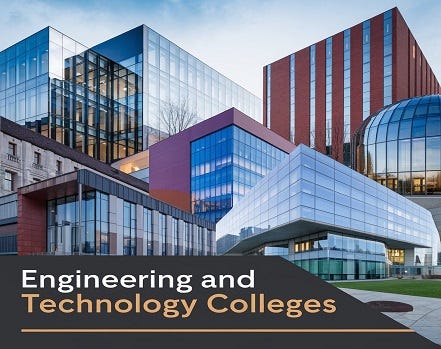Education Insider Magazine |Top Engineering and Technology Colleges
 john campbell
john campbellIntroduction
In an era dominated by rapid technological advancements and complex global challenges, engineering and technology colleges stand at the forefront of innovation. These institutions not only produce skilled professionals but also act as catalysts for research, development, and industrial transformation. With the increasing demand for sustainable solutions, smart systems, and digital connectivity, the role of engineering and technology colleges has become more vital than ever.
The Role of Engineering and Technology Colleges
Engineering and technology colleges offer undergraduate, postgraduate, and doctoral programs in various disciplines such as computer science, electrical engineering, mechanical engineering, civil engineering, information technology, and more. These colleges are designed to equip students with both theoretical knowledge and practical skills essential for the evolving job market.
Modern institutions go beyond textbooks, emphasizing project-based learning, internships, industry collaboration, and innovation labs. These elements foster problem-solving abilities, critical thinking, and hands-on experience — qualities highly valued in today’s competitive workforce.

Emerging Trends in Curriculum and Infrastructure
Over the last decade, engineering colleges have restructured their curricula to include cutting-edge technologies like artificial intelligence, machine learning, data science, robotics, and renewable energy. Institutions are also investing in smart classrooms, 3D printing labs, simulation centers, and startup incubators to stay relevant and ahead of the curve.
Global collaborations with foreign universities and industries are also becoming common. These partnerships offer students international exposure, joint research opportunities, and dual-degree programs.
Challenges and the Way Forward
Despite their contributions, many engineering and technology colleges face challenges such as outdated curricula, lack of skilled faculty, and limited research funding. In some regions, there’s a gap between academic training and industry requirements, leading to employability issues among graduates.
To address these concerns, academic institutions need to engage more actively with industry stakeholders, update their teaching methodologies, and focus on interdisciplinary learning. Accrediting bodies and governments also play a crucial role in ensuring quality education and accountability.
Conclusion
Engineering and technology colleges are instrumental in building the engineers and innovators of tomorrow. As society continues to rely on technological solutions for sustainability, infrastructure, and digital connectivity, the importance of these institutions will only grow. With the right investments in education, infrastructure, and industry collaboration, engineering colleges can remain the cornerstone of progress and transformation in the 21st century.
Subscribe to my newsletter
Read articles from john campbell directly inside your inbox. Subscribe to the newsletter, and don't miss out.
Written by

